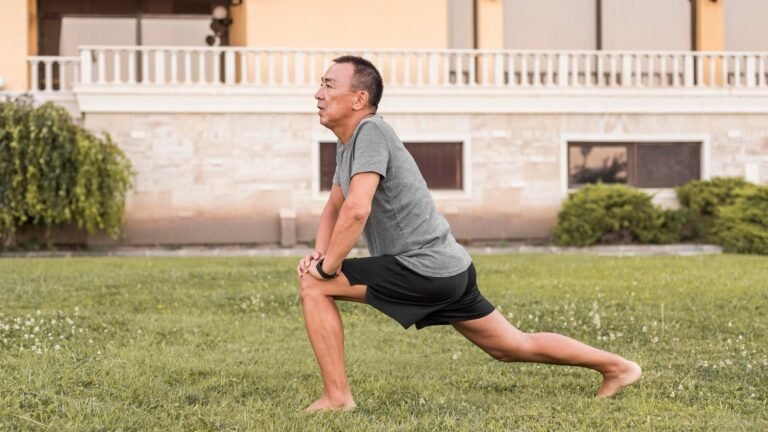Chronic pain, whether it be back pain, arthritis or headaches, can be extremely disruptive. It affects millions of people worldwide and often leads to a reduced quality of life.
While traditional medicine plays an important role in pain management, experts say there’s another tool that can complement these treatments: yoga.
Understanding Chronic Pain:
In an interview with HT Lifestyle, Himalayan Siddha Akshar, founder of Akshar Yoga Kendraa, said, “Chronic pain is not just a physical sensation. It can affect your emotional well-being and overall health. It is often caused by conditions like arthritis, herniated discs and muscle tension. Regardless of the cause, pain can be persistent and debilitating.”
How Yoga Can Help:
Yoga is a holistic practice that includes physical postures, breathing techniques, and meditation. It may come as a surprise, but Himalayan Siddha Akshar has claimed that this ancient practice can have a profound effect on chronic pain management. Here’s how it works:
- Increased flexibility: Yoga poses, called asanas, gently stretch and strengthen muscles, which can help relieve tension, increase flexibility, and reduce pain associated with conditions like arthritis and muscle spasms.
- Improve your posture: Many chronic pain problems are caused by poor posture, and yoga promotes good posture, preventing and relieving pain caused by improper movement.
- Stress Reduction: Stress is a common trigger for chronic pain flare-ups, and yoga incorporates relaxation techniques that calm the mind and reduce stress, which may reduce the frequency and intensity of pain.
- Increase body awareness: Through yoga, people become more in tune with their bodies. This increased awareness can help identify the causes of pain and develop healthier habits.
Yoga for lower back pain:
Himalayan Siddha Akshar explained that lower back pain is one of the most common types of chronic pain resulting from various factors like muscle tension, herniated discs, poor posture, etc., and yoga has several asanas that target lower back pain.
- Child’s Pose (Balasana): This gentle stretch can help relieve back pain by lengthening your spine and relaxing stiff muscles.
- Cat and Cow Stretch: This dynamic movement increases spinal flexibility and helps relieve tension in the back.
- Downward Facing Dog Pose (Adho Mukha Svanasana): This position helps strengthen your back muscles and improve your overall posture.
Yoga for Arthritis:
As arthritis is a chronic disease characterised by joint inflammation and pain, Himalayan Siddha Akshar opines that yoga can be a valuable tool in managing arthritis pain.
- Gentle joint movements: Yoga promotes gentle movement of the joints, reducing joint stiffness and improving mobility.
- Breathing exercises: Pranayama, or yogic breathing techniques, can help manage pain by promoting relaxation and reducing stress.
- Supported poses: Cushions, blocks and other props can be used to support the body during poses, making them more accessible and comfortable for people with arthritis.
Yoga for Insomnia:
Himalayan Siddha Akshar says, “Battling insomnia can be exhausting and frustrating. While there are many treatments out there, yoga offers a natural and effective solution. Practicing these simple techniques in the morning can help calm the mind, relax the body and promote better sleep.” He suggests:
- Cold water bath: A cold bath can help alleviate insomnia by lowering your body temperature, signaling to your brain that it’s time to sleep. Lowering your body temperature also increases relaxation and reduces stress, making it easier to fall asleep and stay asleep.
- Healing Walks: Raise your arms shoulder-width apart and walk in this position with your hands raised. You can hold your hands in the air for 1-3 minutes. Do this for at least 3 sets of 1-3 minutes each.
- Brahmari Pranayama Take a deep breath and make a buzzing sound like a bee. It calms the mind and reduces stress. Practice this by sitting comfortably with your eyes closed. Breathe in deeply through your nose and exhale making a buzzing sound like a bee.
Himalayan Siddha Akshar concludes, “Yoga is a simple yet powerful tool in managing chronic pain. Combining a gentle approach to physical activity with stress reduction techniques, yoga can be undertaken by people of all ages and fitness levels. However, it is essential to consult a healthcare professional before starting any new exercise program, especially if you have a chronic medical condition. When practised mindfully and consistently, yoga can be a valuable complement to traditional pain management strategies and can help you live more comfortably with chronic pain.”
Get daily updates on fashion, Taylor Swift, health, festivals, travel, love, recipes and other latest lifestyle news on Hindustan Times website and app.


